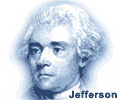Political Leader in the Public Administration Environment, or Who Is the Man of the House?
Solovyov A.I.,
Dr. Sci. (Pol. Sci.), Prof., Head of Political Analysis Department, Faculty of Public Administration, Lomonosov Moscow State University, Moscow, Russia, solovyev@spa.msu.ru
elibrary_id: 75920 |
DOI: 10.17976/jpps/2017.02.05
Solovyov A.I. Political Leader in the Public Administration Environment, or Who Is the Man of the House?. – Polis. Political Studies. 2017. No. 2. https://doi.org/10.17976/jpps/2017.02.05
The article describes the features of the positioning of a political leader in the public administration system. In this context, the author analyzes the leader’s functional and role burden as a bearer of the highest status of authority and as a civil entrepreneur that supports political communication with the society. Upon revealing the specifics of application by the leader of political and administrative tools in the implementation of its functions, the author reveals the limitations and risks of reducing its official functions, which emanate from the administrative hierarchy. As shown in the article, the key means of resolving the structural conflict between political and administrative tools of implementation of the activities of a political leader as a senior state manager is the formation of a special structure of power, emerging as the leader arranges formal and informal ties with the various segments of the ruling elite. The author identifies factors that contribute to the formation of such power construct (leadership political subsystem), as well as describes its network basis, inner structure, the content of endogenous and exogenous connections and relationships. In this regard, the article identifies the ways to enhance the productivity of leader’s administrative functions, to improve its adaptability to the administrative environment, as well as defines the conditions for eliminating the threats and risks of destabilization of the ruling regime.
References
Allison G.T., Halperin M.H. Bureaucratic Politics: A Paradigm and Some Policy Implications. – World Politics. 1972. Vol. XXVI. Supplement. P. 40-79.
Andreyev A.L. “Soft Power”: Arrangement of Senses, Russian Style. – Polis. Political Studies. 2016. No. 5. P. 122-133. (In Russ.) DOI: https://doi.org/10.17976/jpps/2016.05.10
Bekke H.M., Perry J.L., Toonen Th.А.J. Civil Service Systems in Comparative Perspective. Bloomington, IN: Indiana University Press. 1996. 346 р.
Blumer H. Social Problems as Collective Behavior. – Social Problems. 1971. Vol. 18. No. 3. P. 298-306. DOI: https://doi.org/10.2307/799797
Bogason P., Toonen Th.A.J. Introduction: Networks in Public Administration. – Public Administration. 1998. Vol. 76. No. 2. P. 205-207. DOI: https://doi.org/10.1111/1467-9299.00098
Brunsson N., Olsen I.P. The Reforming Organization. London: Routledge. 1993. 224 р.
Bueno de Mesquita B. The Dictator’s Handbook: Why Bad Behavior is Almost Always Good Politics. New York: Random House. 2011. 272 р.
Bueno de Mesquita B. The Predictioneer’s Game: Using the Logic of Brazen Self-Interest to See and Shape the Future. New York: Random House. 2009. 290 р.
Castells M. Communication Power. (Russ. ed.: Castells M. Vlast’ kommunikatsii. Moscow: The Higher School of Economics Publishing House. 2016. 564 p.)
Crozier M., Thoenig J.C. The Regulation of Complex Organized Systems. – Administrative Science Quarterly. 1976. Vol. 2. No. 4. P. 547-570. DOI: https://doi.org/10.2307/2391716
Derlien H.-U. Observations on the State of Comparative Administration Research in Europe – Rather Comparable than Comparative. – Governance. 1992. Vol. 5. No. 3. P. 279-311. DOI: https://doi.org/10.1111/j.1468-0491.1992.tb00041.x
Farazrnand A. Modem Systems of Government. Exploring the Role of Bureaucrats and Politicians. Thousand Oaks, CA: Sage. 1997. 236 р. DOI: https://doi.org/10.4135/9781483327938
Gaman-Golutvina O.V. Politicheskie elity i politicheskoe liderstvo [Political Elites and Political Leadership]. – Politologiya. Leksikon. Pod red. A.I. Solov’eva [Political Science. Lexicon. Ed. by A.I. Solovyov]. Moscow: ROSSPEN. 2007. 798 p. (In Russ.)
Greer P. Transforming Central Government. The Next Steps Initiative. Buckingham: Open University Press. 1994. 140 р.
Hesse J.J. Comparative Public Administration: the State of the Art. – The European Yearbook of Comparative Government and Public Administration. Ed. by J.J. Hesse, Th.A.J. Toonen. Baden-Baden: Nomos. 1995. P. 523-549.
Hilgartner S., Bosk Ch.L. The Rise and Fall of Social Problems: a Public Arenas Model. – American Journal of Sociology. 1988. Vol. 94. No. 1. P. 53-78. DOI: https://doi.org/10.1086/228951
Hood K.K. Public Service Transactions and Reforms. – Peters B.G., Pierre J. Politicians, Bureaucrats and Administrative Reform. London: Routledge. 2001. P. 13-23.
Immergut E.M. Institutional Constraints in Policy. – Oxford Handbook of Public Policy. Oxford University Press. 2008. P. 557-571.
Inside the Reinvention Machine. Ed. by Kettl D.F., Dilulio J.J. Washington, DC: Brookings Institution. 1995. 218 p.
Kickert W.J.M. Public Governance in the Netherlands: an Alternative to Anglo-American “Managerialism”. – Public Administration. 1997. Vol. 75. No. 4. P. 731-752. DOI: https://doi.org/10.1111/1467-9299.00084
Mann M. Power in the 21st Century. Conversations with John Hall. (Russ. ed.: Mann M. Vlast’ v XX stoletii. Moscow: The Higher School of Economics Publishing House. 2014. 208 p.)
Markov A.A. Izbrannye trudy: Teoriya Chisel. Teoriya veroyatnostei. Pod red. prof. Yu.V. Linnika [Selected Works: Number Theory. Probability. Ed. by Y. Linnik]. Moscow: Russian Academy of Sciences Publishing House. 1951. 465 p.
Mikhailova O.V. Networks in Politics and Public Administration [Seti v politike i gosudarstvennom upravlenii]. Moscow: Moscow University Press. 2013. 330 p. (In Russ.)
Moe T.M. The Politics of Bureaucratic Structure. – Can the Government Govern? Ed. by Chubb J.E., Peterson P.E. Washington, DC: Brookings Institution. 1989. P. 267-329.
Page E.C., Wright V. Bureaucratic Elites in Western European Countries: a Comparative Analysis of Official Leaders. Oxford: University press Oxford. 1999.298 р. DOI: https://doi.org/10.1093/0198294468.001.0001
Peters B.G., Pierre J. (eds). Intergovernmental Relations and Multi-Level Governance. – Special Issue of Policy and Politics. 2001. Vol. 29. No. 2. P. 131-135.
Peters B.G., Wright V. Public Policy and Administration, Old and New. – A New Handbook of Political Science. Ed. by Goodin R.E., Klingemann H.-D. Oxford: Oxford University Press. 1996. P. 628-644.
Policy Change and Learning: An Advocacy Coalition Approach. Ed. by Sabatier P.A., Jenkins-Smith H.C. Boulder, CO: Westview Press. 1993. 290 р.
Pomiguev I.A. The Concept of Veto Players: A New Approach to the Study of Forms of Government. – Political Science (RU). 2014. No. 1. P. 199-210. (In Russ.)
Provan K., Kenis P. Modes of Network Governance: Structure, Management, and Effectiveness. – Journal of Public Administration Research and Theory. 2007. Vol. 18. No. 4. P. 229-252. DOI: https://doi.org/10.1093/jopart/mum015
Rhodes R.A.W. The Changing World of Top Officials. Mandarins or Valets? Buckingham: Open University Press. 2001. 274 р.
Rhodes R.A.W. The Governance Narrative: Key Findings and Lessons from the ESRC’s Whitehall Programme. – Public Administration. 2000. Vol. 78. P. 345-363. https://doi.org/10.1111/1467-9299.00209
Schattschneider E.E. The Semisovereign People. Hinsdale: Dryden Press. 1975. 143 р.
Selznick P. Leadership in Administration. A Sociological Interpretation. Berkeley, CA: University of California Press. 1957. 162 р.
Selznick P. Foundations of the Theory of Organization. – American Sociological Review. 1948. Vol. 13. Issue 1. P. 25-35. DOI: https://doi.org/10.2307/2086752
Shul’man E.M. Zakonodatel’stvo kak politicheskii protsess [The Law as a Political Process]. Moscow: Moscow School of Civic Education. 2014. 184 p. (In Russ.)
Simon H.A. The Potlatch Between Economics and Political Science. – Competition and Cooperation. Conversations with Nobelists about Economics and Political Science. Ed. by J.E. Alt, M. Levi, E. Ostrom. New York: Russell Sage Foundation. 1999. P. 112-119.
Smorgunov L.V., Sherstobitov A.S. Politicheskie seti: teoriya i metody analiza [Political Networks: Theory and Analysis Methods]. Moscow: Aspect Press. 2014. 317 p. (In Russ.)
Sollenberger M.A., Rozell M.J. The Presidents Czars. Undermining Congress and the Constitution. Lawrence, Kan.: Univ. Press of Kansas. 2012. 298 p.
Thoenig J.C. Public Sector Organizations’. – Handbook of Organizational Behavior. Ed. by A. Sorge, M. Warner. London: Thomson Business Press. 1996. Vol. 5. P. 421-432.
See also:
Kupryashin G.L.,
Governing through institutional changes. – Polis. Political Studies. 2012. No6
Nisnevich Yu.A., Khakhunova A.K.,
Methodology of Comparative Analysis and Classification of Public Administration Systems. – Polis. Political Studies. 2015. No4
Ogneva Yu.I., Kalmykov N.N.,
Expert Opinion: Image of the Ideal Politician in Russia. – Polis. Political Studies. 2017. No1
Brown A.,
Political Leadership and Political Power. – Polis. Political Studies. 2016. No1
Pshizova S.N.,
Is it possible to regulate democracy? Part I.. – Polis. Political Studies. 2013. No6





.jpg)






 print
print
.jpg)
.jpg)